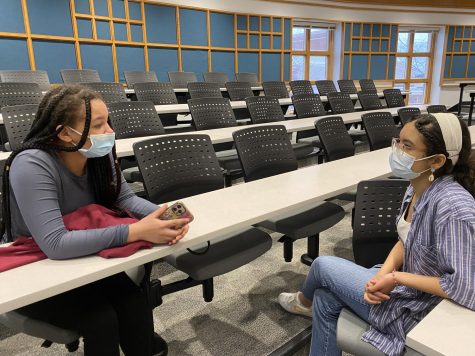Mental health among teens, an exploration
February 10, 2016

Mental illness is an extremely touchy subject that many prefer not to talk about. There are many factors that contribute to mental illness, especially in high school students.
According to nami.org, as children approach their teenage years, one in five 13-18 year olds have, or will have, a serious mental illness and fifty percent of all lifetime cases of mental illness begin by age 14 and 75 percent by age 24. As of now, 18 percent of youth have either a behavioral or anxiety disorder.
Students should understand that mental health is just as important as physical health and should be equally as prioritized.
— Cat Clements
Some people say that this frighteningly large amount of cases of mental illnesses in this age category could be due to the fact that most people within this age category are enrolled in either middle school, high school or post-secondary education and encounter the day-to-day stress that students endure.
“I think that the stress contributes to their mental health,” junior Rachel Kelly said. “Pressure can affect people physically and mentally, and school is filled with pressure,” she added, “Teachers need to ask their students how they are doing and if they are okay, take the students response into account when grading.”
There are not any guaranteed ways to make sure that a student’s mental state is healthy one hundred percent of the time, but people could argue that there are ways that the school system could help students regulate their mental health and make sure that their life is not too hectic or stressful for the courses offered. For example, teachers could make sure that the course they are teaching does not put too much stress or work on a students already hectic life.
“Students should understand that mental health is just as important as physical health and should be equally as prioritized,” sophomore Cat Clements said. “The school system should aim to acknowledge the strong presence of mental illnesses among students and they should provide support and resources to help them.”
Sophomore Maya Yokanovich weighed in on the subject as well, “For students, I have found that it is helpful to drink lots of water and get as much sleep as possible, at least that’s how I can be my best.” Yokanovich added, “Teachers can lighten the amount of work load, with the same amount of curriculum. I find that there is too much busy work,” she continued, “teachers can also continue to do their best to make sure all of their students are prepared for tests and have gotten all of the help that they need to succeed.”
Currently there are not a lot of high school students that feel comfortable talking about mental illnesses because they have either never experienced any type of mental illness or because the subject of mental health is a very sensitive and a touchy topic. Kids are afraid to offend anyone and are typically not educated enough to talk about mental health seriously.
“There’s a ton of pressure to do everything. Maintaining a solid GPA, spend time with friends, participate in clubs, have a job and hopefully get a few hours of sleep,” Cat Clements said. “While ambition and increased responsibility are great, the constant push to excel in all aspects of our lives in detrimental to our mental health.”













Annie Seiler • Mar 29, 2016 at 5:53 pm
I absolutely love that there was attention brought to this subject! The flow of the article is also very good. I loved that they used lots of quotes from people that show their emotion behind the topic because it adds to the overall message and angle of the story. I think that some of the facts were a little bit repeated over the course of the article, but it ended up working good! It sort of engraved the main points of the article a little deeper. I really enjoyed reading this article!
Christopher Gilleo • Mar 29, 2016 at 1:22 pm
I really appreciate how this article actually brings attention to mental illness. It’s sensitive to the topic, but doesn’t shy away from the problem. Also, the quotes added to the focus on the cause of mental illness.
Kaitlin Bloom • Mar 28, 2016 at 9:12 pm
This article does a really good job of sensitively pointing out some of the problems in our school system while not accusing anyone. I personally believe the topic of mental health is not addressed often enough and this does a really great job of raising some much needed awareness. Hopefully a lot of students will read this and it will get people talking.